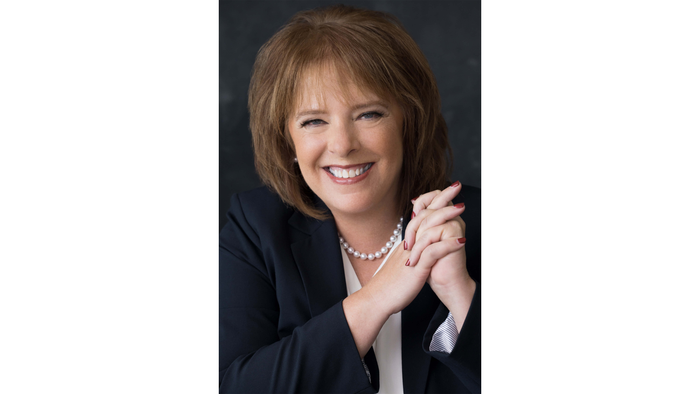After a year marked by 'explosive' growth, Clearfield CEO Cheri Beranek is focused on scaling the company to prepare for federal funding opportunities and increased community broadband builds.

More and more, community broadband providers like incumbent local exchange carriers, electric cooperatives, municipalities and wireless Internet providers are emerging as the answer for providing connectivity to overlooked and underserved areas. For vendors like Clearfield, that's a boon for business.
Clearfield is a provider of fiber protection, management and delivery solutions to broadband service providers. According to the company, roughly 60% of its revenue comes from its over 1,200 tier-2 and tier-3 community broadband customers, including providers like competitive local exchange carriers, municipalities and utilities.
In a conversation with Light Reading, Clearfield CEO Cheri Beranek described the company's year as "phenomenal." It was marked by 92% year-over-year revenue growth to $271 million, driven by community broadband sales, according to fiscal year results reported in November. For Q4, Clearfield brought in $95 million in revenue, versus $45.2 million in Q4 2021.
Figure 2:  Clearfield CEO Cheri Beranek.
Clearfield CEO Cheri Beranek.
(Source: Clearfield via Julie Kiernan Photography; used with permission.)
Beranek attributed the company's "explosive growth" in large part to its focus on community broadband and "solving the needs of markets that traditionally have not had a product line that was appropriate."
Clearfield is meeting those needs by differentiating itself in a couple of ways: its deployment speed (Clearfield "allows you to pass twice as many homes per day as the incumbent provider," said Beranek); plus, its product line "reduces your labor count by 38%" (according to data from a recent customer deployment study) while also putting a Clearfield-certified technician in the field "on every first install," she said.
That part is thanks to what the company bills as its Clearfield College: online training courses on its products and the fiber industry. Beranek said Clearfield College has had "7,000 unique attendees" taking courses ranging from "very technical" to sales support.
Overall, the company's ability to offer a "performance-based solution that allows our customers to align their capex spending alongside their subscriber take rates" – in addition to cutting down labor and deployment time – "has made a big, big difference," she said.
Another way Clearfield is working to respond to market needs is with its recent acquisition of Finnish supplier Nestor Cables for $23 million. Nestor had been a Clearfield supplier since 2012, and Clearfield saw the acquisition as an opportunity to manufacture closer to home, alongside its cable termination facilities in Mexico, and to vertically integrate its FieldShield fiber pathway and protection products.
Figure 1:  Fiber-optic cables.
Fiber-optic cables.
(Source: gualtiero boffi/Alamy Stock Photo)
The Mexico facility will be operational in early 2023. "We are on track for being able to manufacture cable in the first quarter of the calendar year," said Beranek.
The Nestor Cables buy also positions Clearfield for potential growth opportunities in Europe, she added.
"We're currently evaluating, how do we take the fiber management concepts that we use – so, modularity, scalability, cassette-base – and how do we bring that architecture concept, you know, to a European market?" said Beranek. "That's probably more of a fiscal year '24 attribution, but we're really in that listen-and-discovery stage right now."
Buildup to BEAD
The company is also pivoting its strategy from what it previously called "Now of Age" – wherein Clearfield worked toward becoming market-ready for customers' needs – to "LEAP," an acronym that captures the company's plans to scale for the opportunities ahead, including government funding.
While federal and state subsidies for broadband builds aren't yet driving Clearfield's growth, or really showing up on its balance sheet, Beranek said the company will start preparing in 2023 for opportunities to come from the $42.5 billion Broadband Equity, Access and Deployment (BEAD) program.
That prep work includes efforts to expand its capacity, both by adding headcount to all facilities and broadening its pool of suppliers. "We see the government monies are going to make a difference in '24, and we need to invest in that position next year to be able to respond to it," she said.
To that end, Beranek is taking a long-term view of the BEAD program and the country's effort to close the digital divide.
"This is a build of a lifetime. And people should not have a short-term strategy for it, because it's not going to happen overnight," Beranek said.
"There are going to be bumps and hurdles. And there are going to be projects that don't always work as effectively as they should," she added. "People shouldn't try to invalidate the need for this based upon those short-term challenges, but rather make sure we look at this as a long-term investment not only for the country but for all of us as providers."
Related posts:
— Nicole Ferraro, editor, Light Reading, and host of "The Divide" podcast.
About the Author(s)
You May Also Like











